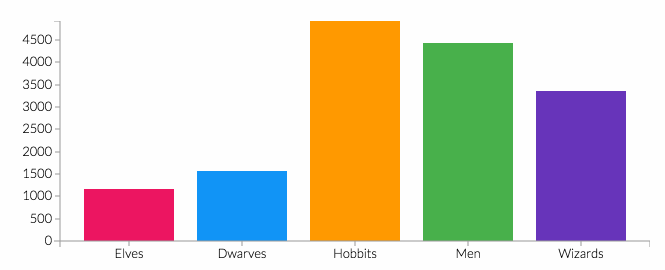Evaluasi Program Tahfidz Ummi Model CIPP di Sd Ummu Aiman Malang
DOI:
 https://doi.org/10.32478/dmdw8f19
https://doi.org/10.32478/dmdw8f19
Keywords:
Evaluasi Program, Model CIPP, Tahfidz Ummi, Al-Qur’an, Sekolah DasarAbstract
Penelitian ini bertujuan untuk mengevaluasi implementasi program Tahfidz Ummi di SD Ummu Aiman Malang pada tahun 2023/2024 menggunakan model evaluasi CIPP (Context, Input, Process, Product). Metode penelitian adalah kualitatif dengan pendekatan lapangan (field research). Data dikumpulkan melalui observasi, wawancara, kuisioner, dan dianalisis menggunakan teknik model interaktif Miles & Huberman. Hasil penelitian menunjukkan bahwa implementasi program Tahfidz Ummi di SD Ummu Aiman berjalan sangat baik. Aspek konteks dinilai sangat baik mencakup pemahaman tujuan, kebutuhan, dan kondisi lingkungan. Aspek input, termasuk kompetensi guru dan materi pembelajaran, juga dinilai sangat baik. Proses pelaksanaan program, yang mencakup strategi pembelajaran dan interaksi antara guru dan siswa, dinilai baik. Aspek produk menunjukkan lebih dari 90% pencapaian hafalan Al-Qur'an siswa. Secara keseluruhan, evaluasi menggunakan model CIPP menunjukkan bahwa program Tahfidz Ummi di SD Ummu Aiman sangat berhasil mencapai target dan memberikan hasil positif bagi siswa.
Downloads
References
Abid Nurhuda, & Hadziq, A. (2022). Implementation of Tahfidz Al-Qur’an program at boarding school SMPTQ Abi Ummi Boyolali. Paedagogia: Jurnal Pendidikan, 11(2), 257–274. https://doi.org/10.24239/pdg.Vol11.Iss2.200
Anisa, S., & Moh. Muslih. (2023). Assessing the effectiveness of the Tahfidz program: A CIPP (Context, Input, Process, and Product) model evaluation approach. Tadibia Islamika, 3(2), 103–110. https://doi.org/10.28918/tadibia.v3i2.1165
Arif, A. cahyono. (2024). The effectiveness of tahsin program and the ability to read Al Qur’an. Journal of Social Science, 1(1), 1–10. https://doi.org/10.61796/ijss.v1i1.5
Ayyusufi, A. M., Anshori, A., & Muthoifin, M. (2022). Evaluation of the CIPP model on the tahfidz program in Islamic Boarding Schools. Nazhruna: Jurnal Pendidikan Islam, 5(2), 466–484. https://doi.org/10.31538/nzh.v5i2.2230
Bagastyo, A. Y., Nurhayati, E., Manah, S. P. H., Iswari, A. A. W. R., Yulikasari, A., Warmadewanthi, I. D. A. A., & Lin, T.-F. (2023). The role of aeration and pre-chlorination prior to coagulation-flocculation process in water treatment: A laboratory and field research in Indonesia. Case Studies in Chemical and Environmental Engineering, 7, 100352. https://doi.org/10.1016/j.cscee.2023.100352
Chew, M., Murat, R., & Justine, K. (2023). Tahfidz Al-Quran learning methods with superior class programs. Journal Neosantara Hybrid Learning, 1(1), 37–53. https://doi.org/10.55849/jnhl.v1i1.83
Chin, J. (2023). Anwar’s long walk to power: the 2022 Malaysian general elections. The Round Table, 112(1), 1–13. https://doi.org/10.1080/00358533.2023.2165303
Dhona, H. R. (2024). Islamic communication as an invention of modern-western knowledge: critical analysis toward Islamic communication in Indonesia. Asian Journal of Communication, 34(3), 381–398. https://doi.org/10.1080/01292986.2024.2320902
Ensmann, S., Ward, A., Fonseca, A., & Petersen, E. (2020). A case study for the 10-step approach to program evaluation. TechTrends, 64(2), 329–342. https://doi.org/10.1007/s11528-019-00473-4
Heo, M., & Lee, W. (2023). Rethinking Asian values in journalism: the case of the pressroom in the South Korean presidential office. Asian Journal of Communication, 33(5), 433–451. https://doi.org/10.1080/01292986.2023.2239258
Herawati, Y. W. (2022). The inefficiency of ummi method in learning Al-Qur’an. https://doi.org/10.2991/assehr.k.220206.041
Hermanto, H., Haryono, P., Muthi, I., & Sugiyanti, S. (2022). Evaluation of tahfizh program taajul waqoor ti tahfiizhil Qur’anil kariim at an Islamic Boarding School in Bekasi. AL-ISHLAH: Jurnal Pendidikan, 14(2), 1283–1296. https://doi.org/10.35445/alishlah.v14i2.1048
Hidayat, A. A., Nugroho, C., Sadono, S., & Nastain, M. (2024). Deradicalization communication model through preaching in the province of Yala South Thailand. Asian Journal of Communication, 34(3), 367–380. https://doi.org/10.1080/01292986.2023.2260391
Kosim, M., Kustati, M., Sabri, A., & Mustaqim, M. (2019). Strengthening students’ character through Tahfidz Quran in Islamic education curriculum. Jurnal Pendidikan Islam, 8(1), 69–94. https://doi.org/10.14421/jpi.2019.81.69-94
Lee, S. young, Shin, J.-S., & Lee, S.-H. (2019). How to execute Context, Input, Process, and Product evaluation model in medical health education. Journal of Educational Evaluation for Health Professions, 16, 40. https://doi.org/10.3352/jeehp.2019.16.40
Riegel, U., & Rothgangel, M. (2023). The impact of institutional context on research in religious education: results from an international comparative study. Journal of Religious Education, 71(2), 155–166. https://doi.org/10.1007/s40839-023-00202-3
Rodríguez, J.-R., Clarisó, R., & Marco-Simó, J. M. (2019). Towards a famework for assessing IT strategy execution. Computers, 8(3), 69. https://doi.org/10.3390/computers8030069
Sopha, S., & Nanni, A. (2019). The CIPP model : Applications in language program evaluation. The Journal of AsiaTEFL, 16(4), 1360–1367. https://doi.org/10.18823/asiatefl.2019.16.4.19.1360
Stufflebeam, D. L. (2003). The CIPP Model for Evaluation. In International Handbook of Educational Evaluation (pp. 31–62). Springer Netherlands. https://doi.org/10.1007/978-94-010-0309-4_4
Susanto, S., Desrani, A., & Zamani, D. A. (2021). Learning tahfidz Al-Qur’an during the Covid-19 pandemic. Jurnal Pendidikan Agama Islam, 18(2), 257–272. https://doi.org/10.14421/jpai.2021.182-03
Umam, K. A., & Saripah, I. (2018). Using the context, input, process and product (CIPP) model in the evaluation of training programs. International Journal of Pedagogy and Teacher Education, 2, 19. https://doi.org/10.20961/ijpte.v2i0.26086
Wahyuni, S. N., & Aisyah, N. (2020). Evaluasi program pembelajaran metode ummi dalam meningkatkan kemampuan membaca Al-Qur’an di SMP. Pedagogi: Jurnal Ilmu Pendidikan, 20(2), 141–148. https://doi.org/10.24036/pedagogi.v20i2.876
Yang, C., Xu, B., Zhu, Z., He, Y., Wang, Y., Xu, H., & Zhang, M. (2024). Reveal dynamic flows of regional e-waste: Evidence from a field research. Circular Economy, 3(2), 100086. https://doi.org/10.1016/j.cec.2024.100086
Yuliana, L., & Arikunto, S. (2008). Manajemen Pendidikan. Yogyakarta: Teras.
Zhang, G., Zeller, N., Griffith, R., Metcalf, D., Williams, J., Shea, C., & Misulis, K. (2011). Using the context, input, process, and product evaluation model (CIPP) as a comprehensive framework to guide the planning, implementation, and assessment of service-learning programs. Journal of Higher Education Outreach and Engagement, 15(4), 57–84. http://openjournals.libs.uga.edu/index.php/jheoe/article/view/628
Downloads
Published
Issue
Section
License
Copyright (c) 2024 Tri Mardiansah, Muhammad Daniel, Mi'raj Mi'raj

This work is licensed under a Creative Commons Attribution-ShareAlike 4.0 International License.
Authors hold and retain copyright and grant the journal right of first publication with the work simultaneously licensed under a http://creativecommons.org/licenses/by-sa/4.0 that allows others to share the work with an acknowledgment of the work's authorship and initial publication in this journal.

This work is licensed under a Creative Commons Attribution-ShareAlike 4.0 International License.
How to Cite
Similar Articles
- Arika Oernika Mahanani, Sulistyorini Sulistyorini, MANAJEMEN KURIKULUM TERPADU; Studi tentang Penerapan Model Kurikulum Kulliyatul Mu’allimin al-Islamiyah (KMI) dalam Meningkatkan Mutu Pendidikan di MA Al-Rosyid Bojonegoro , Evaluasi: Jurnal Manajemen Pendidikan Islam: Vol. 7 No. 2 (2023): EVALUASI- Edisi September
- Muhammad Faishal Haq, MANAJEMEN GURU ERA OTONOMI DAERAH , Evaluasi: Jurnal Manajemen Pendidikan Islam: Vol. 1 No. 2 (2017): EVALUASI-edisi SEPTEMBER
- Ahmad Khoiron Minan, Strategi Pengelolaan Kekayaan Menggunakan Wealth Management Dalam Upaya Mengembangkan Sarana Dan Prasarana Di Pondok Pesantren Sunan Drajat , Evaluasi: Jurnal Manajemen Pendidikan Islam: Vol. 6 No. 1 (2022): EVALUASI- Edisi Maret
- Muhammad Husni, ANALISIS KEGIATAN MUSYAWARAH MELALUI PRODUKTIVITAS PEMBELAJARAN PROBLEM BASED LEARNING (PBL) PADA MATERI JUAL BELI MATA PELAJARAN PENDIDIKAN AGAMA ISLAM DI MA’HAD ‘ALY PONDOK PESANTREN LIRBOYO KEDIRI , Evaluasi: Jurnal Manajemen Pendidikan Islam: Vol. 7 No. 2 (2023): EVALUASI- Edisi September
- Ade Riska Nur Astari, Ali Akbar Jono, STUDI ANALISIS PENERAPAN KONSEP KEPEMIMPINAN PADA PERGURUAN TINGGI KEAGAMAAN ISLAM (PTKI) DI KOTA BENGKULU , Evaluasi: Jurnal Manajemen Pendidikan Islam: Vol. 6 No. 1 (2022): EVALUASI- Edisi Maret
- Mahfida Inayati, Mulyadi Mulyadi, Ali Nurhadi, ANALISIS PENINGKATAN MUTU LEMBAGA PENDIDIKAN PESANTREN MELALUI MANAJEMEN HUMAS , Evaluasi: Jurnal Manajemen Pendidikan Islam: Vol. 7 No. 2 (2023): EVALUASI- Edisi September
- Rani Putri Prihatin, Iqbal Faza Ahmad, STRATEGI PEMASARAN JASA PENDIDIKAN DALAM UPAYA MENINGKATKAN MINAT SISWA BARU DI MTSN 5 SLEMAN YOGYAKARTA , Evaluasi: Jurnal Manajemen Pendidikan Islam: Vol. 4 No. 2 (2020): Evaluasi-edisi September
- Dicky Artanto, Zainal Arifin, Diningrum Citraningsih, STRATEGI KEPEMIMPINAN PROFETIK DALAM MENGELOLA LEMBAGA PENDIDIKAN ISLAM DI MASA KRISIS , Evaluasi: Jurnal Manajemen Pendidikan Islam: Vol. 6 No. 1 (2022): EVALUASI- Edisi Maret
- Uuh Buchori, Ilzamudin Ma'mur, Ali Muhtarom, PERAN PENTING KEPEMIMPINAN TRANSFORMASIONAL DALAM PROSES PENGEMBANGAN MADRASAH , Evaluasi: Jurnal Manajemen Pendidikan Islam: Vol. 8 No. 1 (2024): Evaluasi-Edisi Maret
- Mochamad Fathoni, Husniyatus Salamah Zainiyati, PEMANFAATAN WEBSITE MADRASAH SEBAGAI MEDIA PEMBELAJARAN E-LEARNING DI TENGAH PANDEMI COVID-19 DI MTs KEDUNGJAMBE SINGGAHAN TUBAN , Evaluasi: Jurnal Manajemen Pendidikan Islam: Vol. 4 No. 2 (2020): Evaluasi-edisi September
You may also start an advanced similarity search for this article.













